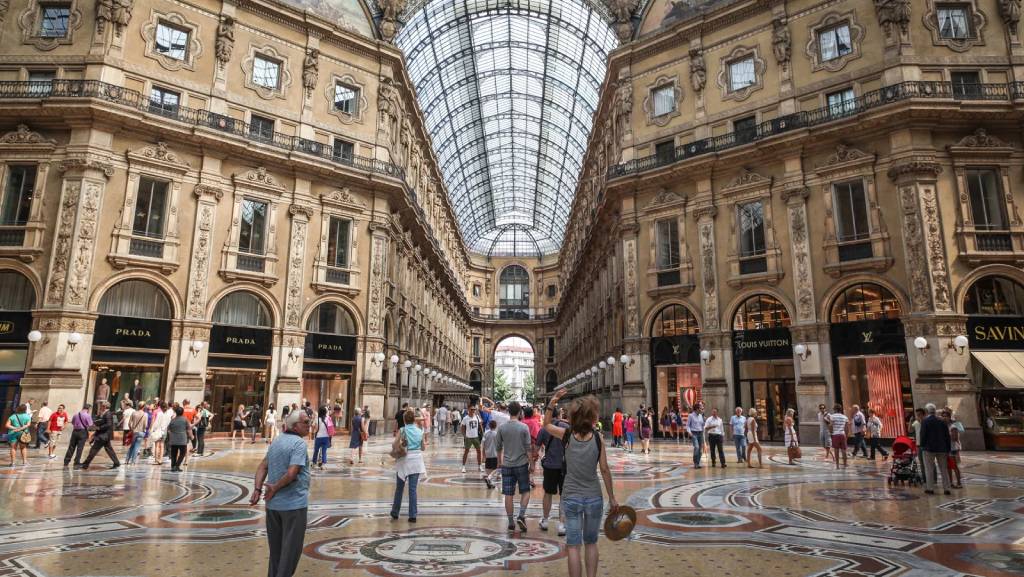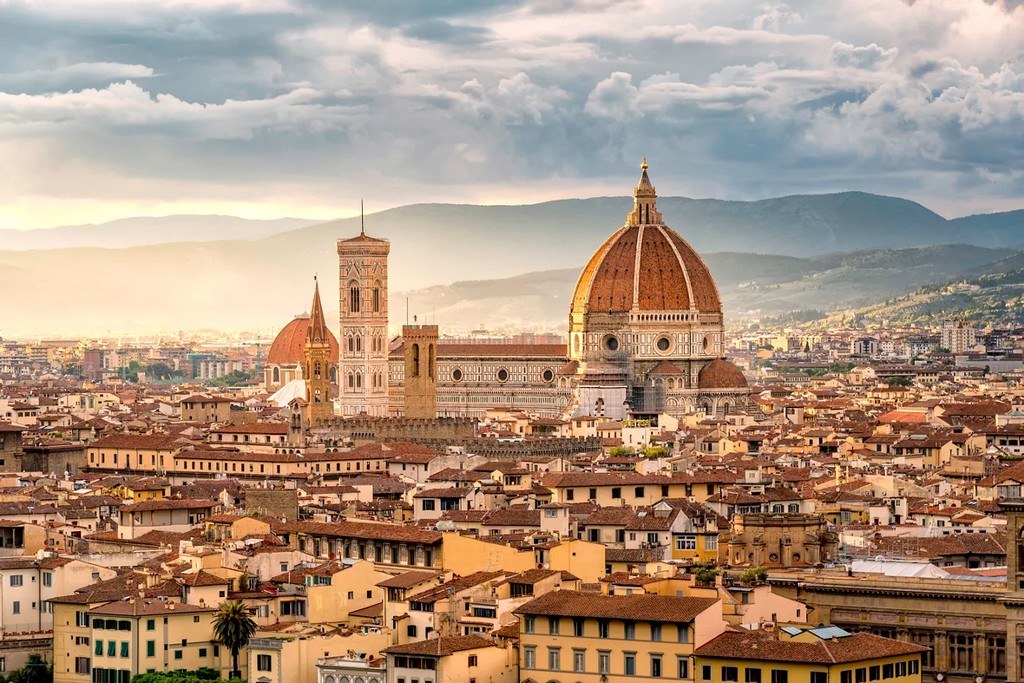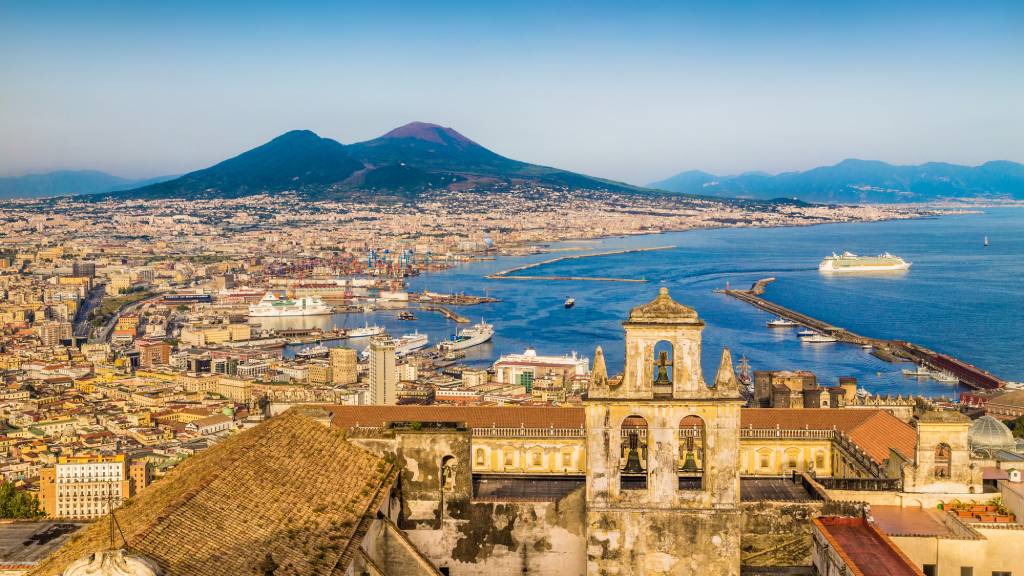
Milan is pure Italian flair mixed with a hyper-modern, international energy. It’s where business suits meet high fashion, and ancient history sits right next to cutting-edge design. It’s often overshadowed by Rome or Venice, but trust me, this city has a chic, confident buzz all its own. I love that you can spend the morning staring up at the intricate Duomo, the afternoon shopping in the Galleria Vittorio Emanuele II, and the evening sipping an elegant Aperitivo in the Navigli canal district. Milan is all about style, substance, and a subtle but powerful history. If you’re ready for a sophisticated urban adventure, keep reading for the best of Italy’s dynamic second city.
Why Visit Milan?
Milan is the financial and fashion capital of Italy—a powerhouse of design, commerce, and culture. It’s elegant, fast-paced, and offers a unique, cosmopolitan experience. Here’s why you need to put Milan on your list:
- High Fashion & Design: It’s the global mecca of style. Window-shop the *Quadrilatero della Moda* (Fashion Quad) and see the latest trends that set the world’s pace.
- The Duomo di Milano: Climb to the rooftop of one of the world’s largest Gothic cathedrals for an incredible view and a close-up look at its thousands of statues.
- Da Vinci’s *Last Supper*: Experience one of history’s most iconic frescoes at the Santa Maria delle Grazie convent (book well in advance!).
- The Aperitivo Tradition: Enjoy Milan’s signature evening ritual: pay for an elevated cocktail and get access to a lavish, all-you-can-eat buffet.
- Lake Proximity: Milan is the perfect gateway for easy day trips to the stunning Italian Lakes, including Lake Como and Lake Maggiore.
Milan offers a dynamic mix of historic grandeur and contemporary elegance—a must for lovers of art, architecture, and luxury.
What Are the Best Things to Do in Milan? (For Your First Visit)
Milan Duomo (Cathedral)
The imposing Gothic cathedral is the heart of Milan. A visit to the **Duomo Terraces** is a must-do, offering incredible city views and a chance to see its 3,400+ statues up close. Entry Ticket and Terrace Access via GetYourGuide.
The Last Supper (Il Cenacolo)
Leonardo da Vinci’s world-famous mural is on the refectory wall of the Santa Maria delle Grazie Convent. It’s one of the hardest artworks to see—**tickets sell out months in advance**. Look for guided tours with guaranteed tickets on Viator.
Galleria Vittorio Emanuele II
Dubbed “il salotto di Milano” (Milan’s living room), this is one of the world’s oldest shopping galleries, famous for its iron and glass architecture and luxury shops. It’s a great spot for a fancy coffee.
Sforza Castle (Castello Sforzesco)
A historic fortress that was once the residence of the Dukes of Milan and now houses several museums and art collections. It also serves as the gateway to Parco Sempione. Purchase tickets and tours for Sforza Castle on Viator.
Teatro alla Scala
One of the most prestigious opera and ballet houses in the world. Even if you don’t catch a performance, a visit to the elegant museum next door is highly recommended. Book your La Scala Museum and Theatre Tour on GetYourGuide.
Brera Art Gallery (Pinacoteca di Brera)
An art gallery housing some of the most important works of Italian painting, including masterpieces by Raphael and Caravaggio. It is located in the charming, bohemian Brera neighborhood. Secure your Priority Entrance Ticket for Brera Art Gallery on GetYourGuide.
Navigli District
Milan’s canal district, partially designed by Leonardo da Vinci. The area is famous for its nightlife and the traditional **Milanese Aperitivo**. It’s perfect for an evening stroll and dinner. Explore the Navigli District with a guided tour via TripAdvisor.
San Siro Stadium (Stadio Giuseppe Meazza)
Home to both AC Milan and Inter Milan, this is a must-see for soccer fans. The tour typically includes the museum, changing rooms, and the pitch. Official San Siro Stadium and Museum Entrance Ticket via GetYourGuide.
Fashion Quadrangle (Quadrilatero della Moda)
Comprising Via Montenapoleone, Via della Spiga, Via Manzoni, and Via Sant’Andrea, this is the global epicenter of high fashion. Even if you don’t buy anything, it’s worth a window-shopping trip to admire the luxury displays.
Monumental Cemetery (Cimitero Monumentale)
An open-air art gallery featuring stunning mausoleums and sculptures that celebrate Milan’s history and important figures. Entrance is free, and it offers a quiet respite from the city bustle. Check for Guided Tours of the Monumental Cemetery on TripAdvisor.
/tp_widget]
What’s the Best Month to Visit Milan?
The sweet spots for Milan are the shoulder seasons: **Spring (March–May)** and **Fall (September–November)**. These months offer mild, pleasant weather (highs in the 50s to low 70s °F) perfect for sipping Aperitivos and exploring the Duomo rooftop. **Late May or October** are often cited as excellent for manageable crowds and a vibrant atmosphere. Summer can be hot and humid, while August is notably quiet as many locals are on holiday. Winter (December–February) is cold but brings festive Christmas markets and major winter fashion sales for bargain hunters.
/tp_widget]
How to Get to Milan
Milan is served by three major airports: Malpensa (MXP), Linate (LIN), and Bergamo Orio al Serio (BGY). Check WayAway for the best connections, as Milan is a major entry point into Europe.
- Malpensa (MXP): The largest. Take the Malpensa Express train directly to Milano Centrale or Cadorna stations. ($13–15, 30–50 min).
- Linate (LIN): Closest to the city. Connected by Metro Line 4 (M4) to the center. ($1.70, 15 min).
- Bergamo (BGY): Used by budget carriers. Take an airport shuttle bus to Milano Centrale. ($10–12, 60 min).
Milano Centrale station is one of Europe’s largest rail hubs, connecting Italy via high-speed trains (Frecciarossa, Italo) and providing international links.
How to Get Around Milan
Milan is a large, modern, and busy city that relies heavily on its efficient public transportation system, run by ATM. While the Duomo area is walkable, you’ll need transit to reach areas like the Navigli canals or the Fiera district.
- Metro (Subway): Milan has four main lines (M1, M2, M3, M5) that are clean, fast, and cover the city comprehensively.
- Tram: Historic trams are great for surface travel and offer a scenic view, complementing the Metro.
- Tickets & Passes: A standard ticket costs around $2.20. For tourists, purchase a 24-hour ($7.50) or 72-hour pass ($15.50) for unlimited travel across the network.
- Taxi/Ride-share: Taxis are readily available but more expensive than in other Italian cities. Use the Free Now app for easy booking.
- Car Rental: Not recommended for city travel. If needed for trips to Lake Como or the Alps, rent via DiscoverCars and use paid parking garages.
Tips for Tourists Using Transport:
- Milan’s transport system is zoned. Ensure your ticket covers the zone you are traveling to/from (usually Zone 1 for the main city).
- Be mindful of peak commuter times on the Metro, especially early morning and late afternoon.
- Walking is feasible in the central core, but use the Metro for anything beyond two stops.
Conclusion: Milan is Italy’s engine of modernity and style, and its public transit reflects that efficiency. Utilize the excellent Metro and Tram network to effortlessly traverse the city, linking the historic Duomo with the cutting-edge fashion districts and lively Navigli. Plan smart, travel efficiently, and enjoy Milan’s sophisticated vibe. Our premium guide offers detailed Metro maps and itinerary suggestions!
Note: This article contains affiliate links. If you purchase something I’ve recommended, I’ll earn a small commission at no extra cost to you. I really appreciate your support and I hope this guide helps you ♡









